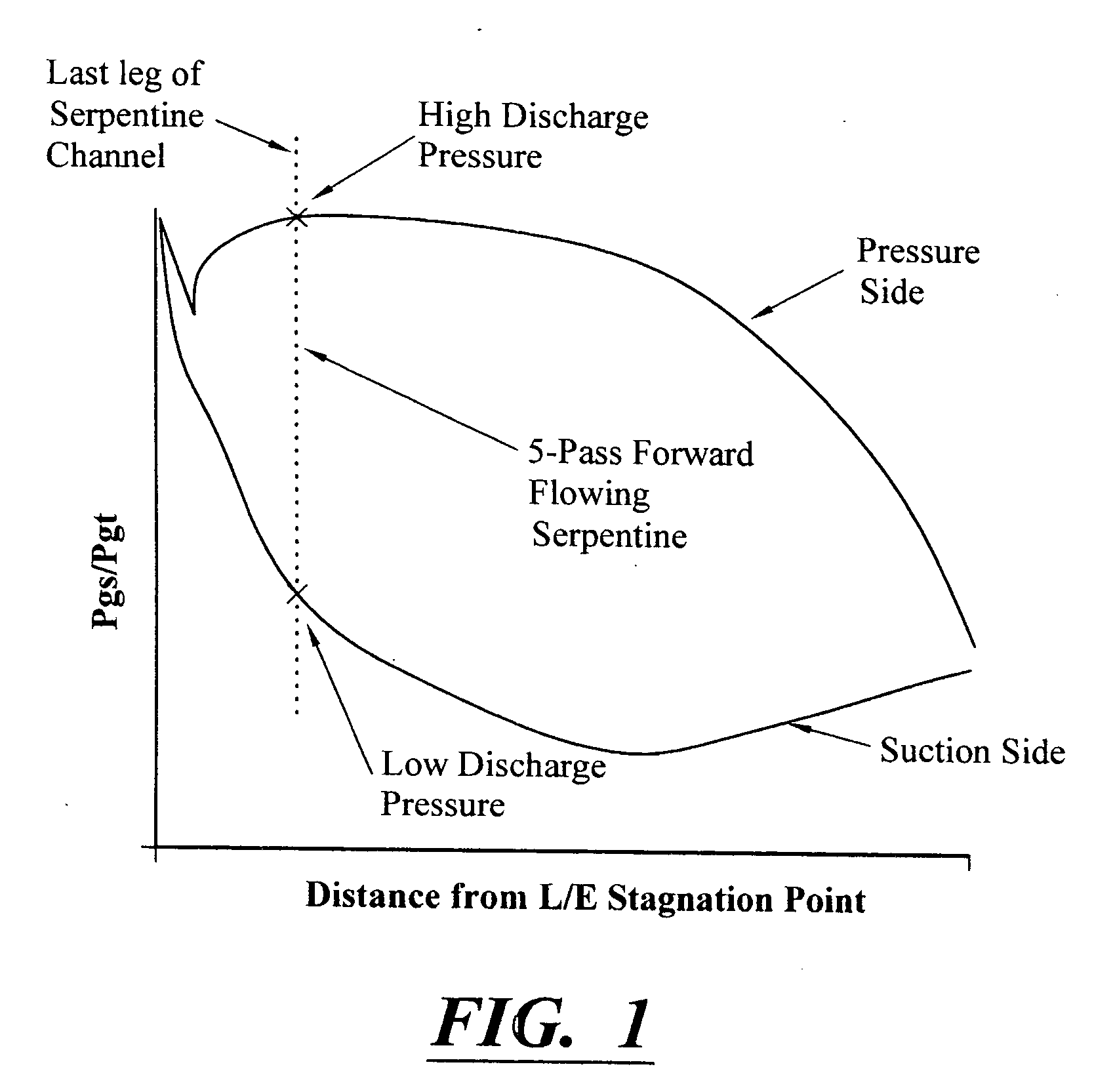Turbine blade cooling system with bifurcated mid-chord cooling chamber
a cooling system and turbine blade technology, applied in the field of turbine blade cooling systems, can solve the problems of thermal stress through the blade, low so as to improve the efficiency of the cooling system and reduce the overall cooling fluid supply pressur
- Summary
- Abstract
- Description
- Claims
- Application Information
AI Technical Summary
Benefits of technology
Problems solved by technology
Method used
Image
Examples
Embodiment Construction
[0017] As shown in FIGS. 2-6, this invention is directed to a turbine blade cooling system 10 for turbine blades 12 used in turbine engines. In particular, the turbine blade cooling system 10 is directed to a cooling system 10 located in a cavity 14, as shown in FIGS. 3-5, positioned between two or more walls 28 forming a housing 16 of the turbine blade 12. The cooling system 10 may include one or more leading edge cooling channels 18, one or more trailing edge cooling channels 20, and a bifurcated mid-chord cooling chamber 22 positioned between the leading edge and trailing edge cooling channel 18, 20. The bifurcated mid-chord cooling chamber 22 may be formed from a pressure side serpentine cooling channel 24 in contact with a pressure side wall 26 of the turbine blade 12 and a suction side serpentine cooling channel 28 in contact with the suction side wall 30 of the turbine blade 12. The bifurcated mid-chord cooling chamber 22 may be configured to pass cooling fluids through the p...
PUM
 Login to View More
Login to View More Abstract
Description
Claims
Application Information
 Login to View More
Login to View More - R&D
- Intellectual Property
- Life Sciences
- Materials
- Tech Scout
- Unparalleled Data Quality
- Higher Quality Content
- 60% Fewer Hallucinations
Browse by: Latest US Patents, China's latest patents, Technical Efficacy Thesaurus, Application Domain, Technology Topic, Popular Technical Reports.
© 2025 PatSnap. All rights reserved.Legal|Privacy policy|Modern Slavery Act Transparency Statement|Sitemap|About US| Contact US: help@patsnap.com



